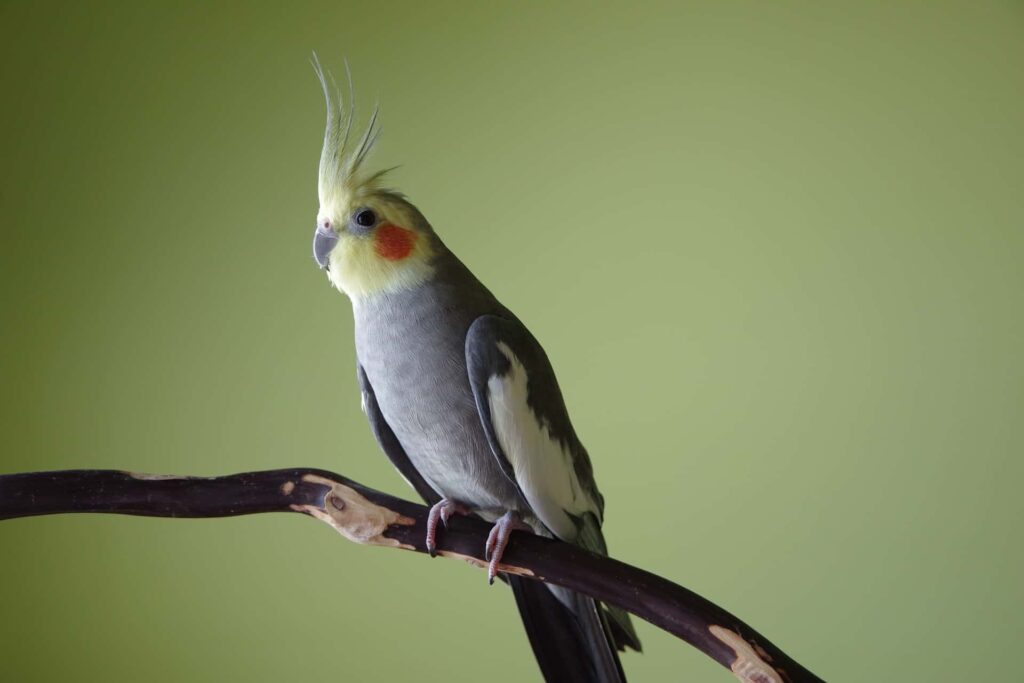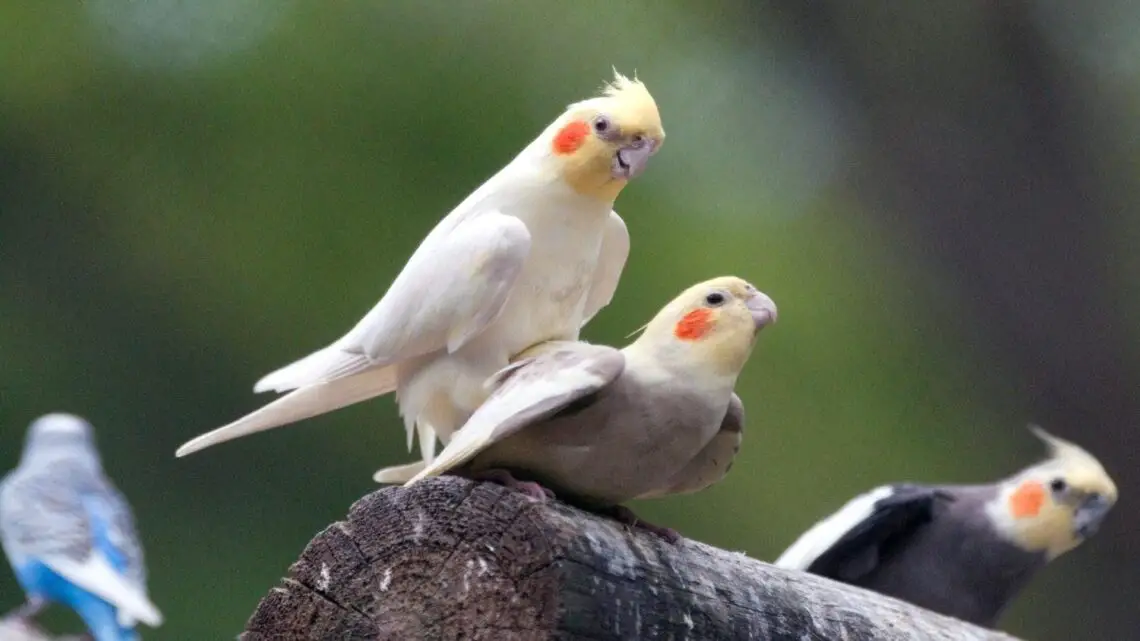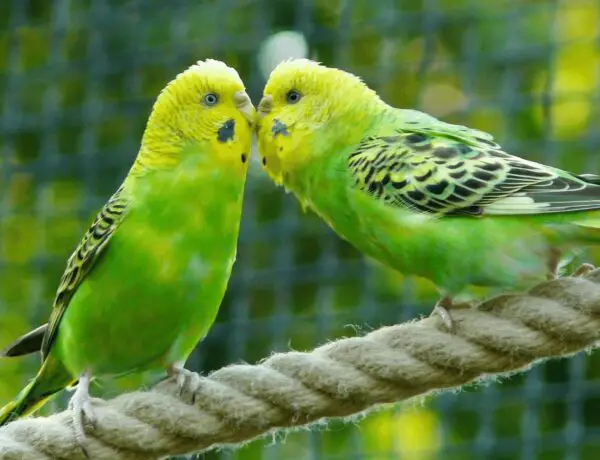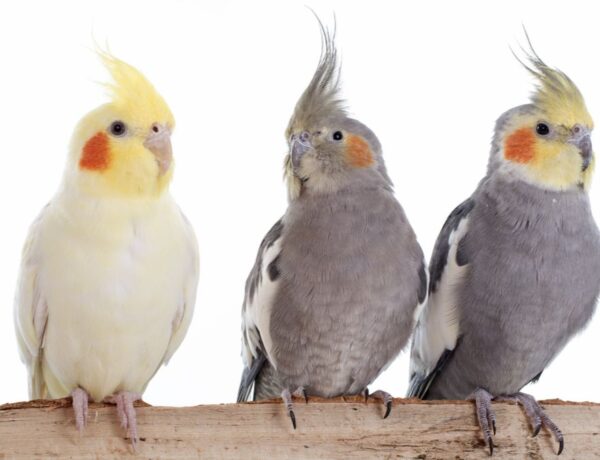Introduction
How Big Do Cockatiels Get: Cockatiels are charming and popular pet birds known for their friendly personalities and captivating appearances. Understanding the size of these delightful birds is essential for providing them with appropriate care and ensuring they fit seamlessly into your household. In this article, we will explore the physical characteristics and size variations of cockatiels together, shedding light on the factors that influence their growth and how to promote their well-being as they reach their full size. So, if you’re curious about the dimensions of these feathered companions or considering bringing one into your home, read on to discover just how big cockatiels can grow to be. Cockatiels, scientifically known as Nymphicus hollandicus, belong to the parrot family and are native to the arid regions of Australia. Their charming personalities and striking appearance have made them a popular choice among bird enthusiasts and pet owners worldwide. However, it’s important to note that there can be some variation in size depending on factors such as genetics and diet.
Cockatiels are sexually dimorphic, which means that males and females may have slightly different size and coloration. In general, males tend to be slightly larger than females, and they often have brighter and more vibrant plumage, with distinctive orange cheek patches. Understanding the typical size of cockatiels is crucial for providing them with adequate housing, nutrition, and overall care. Additionally, as these birds are known for their playful and social nature, being aware of their size will help you create a suitable environment for them to thrive in as they become cherished members of your household. So, let’s delve deeper into the factors that influence their growth, and explore tips on ensuring the well-being of your cockatiel companion as it matures. The size of a cockatiel is influenced by several factors, including genetics, diet, and overall health. Genetics play a significant role in determining a cockatiel’s ultimate size, as it is largely determined by their specific breed and lineage.
Some breeds may naturally grow larger than others, so it’s essential to know your cockatiel’s lineage if possible, or consult with a breeder or avian veterinarian for insights into its expected size. Diet is another critical factor that can affect a cockatiel’s growth. A well-balanced diet rich in essential nutrients is essential for proper development. A healthy diet typically includes high-quality commercial pelleted bird food supplemented with fresh fruits, vegetables, and occasional treats like millet sprays. Adequate nutrition ensures that your cockatiel reaches its full size and maintains optimal health. Furthermore, providing your cockatiel with a spacious and safe living environment can promote healthy growth. A sufficiently large cage with room for exercise and exploration is essential for their physical development. Additionally, regular out-of-cage playtime and social interaction with their human companions contribute to their overall well-being.

At what age is a cockatiel full grown?
Male cockatiels are fully grown or sexually mature at 12 months of age. For females, this time is around 18 months. Only fully grown cockatiels should be allowed to mate and nest. Despite calling it “adulthood,” these birds will continue to grow and develop further.
Cockatiels are charming and popular pet birds known for their striking appearance and playful personalities. If you’re a cockatiel owner or considering bringing one into your home, you might wonder at what age these delightful birds reach their full grown size and maturity.
While they physically mature relatively quickly, it’s essential to understand that cockatiels continue to develop mentally, emotionally, and behaviorally throughout their lives. Their personalities may evolve, and they may become more bonded and comfortable with their human caregivers over time.
It’s worth mentioning that gender can also influence the growth rate and size of cockatiels. In general, male cockatiels tend to be slightly larger than females, and they often have more vibrant plumage, including the distinctive bright orange cheek patches.
Is it better to have 1 or 2 cockatiels?
Cockatiels usually do very well in pairs. And if you spend time around them often they should still be comfortable with you. As for having zebra finches with a tiel’ it honestly depends on that bird although tiels are known for there easy-going personality.
Cockatiels are naturally social birds, and having a companion of their own species can provide valuable social interaction. They can preen each other, play together, and communicate in their unique ways, which can reduce loneliness and boredom.
Cockatiels are excellent mimickers, and when they are kept in pairs, they often learn from each other. This can include learning new songs, behaviors, or tricks.
Loneliness can lead to stress and behavioral issues in cockatiels. Having a companion bird can mitigate these issues and provide emotional support, especially if you have a busy lifestyle or cannot spend as much time with your bird as you’d like.
Is A cockatiel a good pet?
Cockatiels make great pets for families, even those with small children. However, they can be noisy and messy, so it’s important to know what you’re getting into before adopting one.
Cockatiels are known for their charming and affectionate personalities. They are often described as playful, social, and curious birds that can form strong bonds with their human caregivers. They are relatively easy to train and can learn tricks, mimic sounds, and even develop unique personalities.
Cockatiels thrive on social interaction and can become deeply attached to their human companions. If you can provide them with regular attention and companionship, they can make wonderful pets.
Their playful nature, relatively low noise level, and affectionate personalities can bring joy and companionship to your life. However, like any pet, it’s crucial to assess your ability to meet their needs and provide them with a loving and nurturing environment before deciding if a cockatiel is the right pet for you.
Is A cockatiel a good first bird?
Cockatiels make an excellent first bird for a family. Larger than budgies and smaller than larger parrots, these birds are easy to maintain and provide endless hours of entertainment and companionship.
Cockatiels are medium-sized birds, making them easier to handle and care for than larger parrot species. Their size is more manageable for first-time bird owners, especially those who may be new to avian care.
Cockatiels are known for their friendly and affectionate personalities. They often form strong bonds with their human caregivers, which can make the ownership experience rewarding for beginners.
These birds are relatively easy to train and can learn tricks, mimic sounds, and even become potty trained. Their eagerness to interact and learn makes them an excellent choice for first-time bird trainers.
What is the cleanest pet bird?
Smaller birds require less food and produce less waste, which means that there is less cleaning up for you to do. Budgies, canaries, and finches are all good examples of small birds that are relatively low-maintenance. If you’re looking for something a little bigger, cockatiels and conures are also great options.
Budgerigars, commonly known as budgies, are small parakeets that are generally clean and tidy birds. They have small droppings compared to larger parrot species, making cage cleaning less frequent.
Canaries are small and relatively clean birds. They produce small, dry droppings that are easy to clean up. Regular cage maintenance is still essential, but it’s less labor-intensive than with larger birds.
Cockatiels are known for their friendly and social nature. They produce relatively dry droppings and are usually good about keeping their feathers clean. Regularly providing a birdbath or a shallow dish of water for bathing helps them maintain their plumage.
Can 2 male cockatiels live together?
Yes, same sex cockatiels can get along just fine. However, not all birds will get along. Most likely if you can find another older male that is lonely, they will get along. But you need to be prepared in case they do not get along.
Like humans, birds have their own personalities, and compatibility between two cockatiels is not guaranteed. Before housing them together, it’s a good idea to introduce them gradually in a neutral environment to gauge their reactions. Some cockatiels may form strong bonds with each other, while others may not get along and may display aggressive behaviors.
The age and socialization history of the cockatiels can also impact their ability to live harmoniously. Birds that were hand-raised or socialized with other birds from a young age tend to adapt more easily to living with a companion.
It’s crucial to provide a spacious cage to accommodate two cockatiels comfortably. The cage should have plenty of perches, toys, and food and water dishes to prevent territorial disputes and promote mental and physical stimulation.
Is it OK to have 2 female cockatiels?
Generally, cockatiels of the same sex tend to get along and can be happily housed together, although more alpha-type males may squawk in a show of dominance, he says. But despite the birds’ good nature, it is a best practice to make introductions on neutral territory.
While female cockatiels are generally more sociable and less aggressive than males, individual personalities can vary. It’s essential to introduce the two birds gradually and monitor their interactions. In most cases, female cockatiels are more likely to tolerate each other and form bonds without major conflicts.
The age and socialization history of the cockatiels can impact their ability to cohabitate. Birds that have been raised together or have had positive experiences with other birds are more likely to get along well.
Provide a spacious cage with multiple perches, toys, and separate food and water dishes to accommodate both birds comfortably. Having enough space and resources can help prevent competition and territorial disputes.
Is cockatiel legal in India?
In India, local birds are not supposed to be kept as pets. But, exotic birds such as budgerigars and cockatoos are allowed to be kept as pets. It is common for people to keep parrots as pets but this is illegal, as is keeping mynas and finches that are trapped from the wild and sold in markets.
Reach out to your local forest department or wildlife authority to inquire about the specific regulations and requirements in your area regarding the possession of cockatiels or other pet birds.
The Convention on International Trade in Endangered Species of Wild Fauna and Flora (CITES) is an international treaty that regulates the trade of wildlife species. Cockatiels may be subject to CITES regulations, so verify whether they are listed and what permits, if any, are required for importation or ownership.
Seek advice from experienced avian veterinarians or breeders who are knowledgeable about the legal aspects of owning cockatiels in India. They can provide guidance on proper care and legal considerations.

Conclusion
Understanding the size of cockatiels is crucial for anyone considering these charming birds as pets or looking to provide the best care for their feathered companions. Adult cockatiels typically reach an average length of 12 to 14 inches and weigh between 2.5 to 3.5 ounces. However, it’s important to remember that there can be variations in size based on factors such as genetics, diet, and gender. Cockatiel size, known for their playful and social nature, are delightful additions to any household. To ensure their well-being and proper growth, providing a balanced diet, a spacious and safe living environment, and regular social interaction is essential. These factors not only influence their size but also contribute to their overall health and happiness. As with any pet, understanding the unique needs of cockatiels, including their size and how it relates to their care, is key to fostering a long and rewarding relationship with these endearing birds. By offering them the right environment and attention, you can enjoy the delightful companionship of a cockatiel as it grows to its full size and beyond.
Furthermore, it’s important to recognize that cockatiels are not just defined by their physical size but by their personalities and behaviors. These birds are known for their charming and affectionate nature, making them wonderful companions for those willing to invest time and care in their well-being. Their vocalizations, playful antics, and ability to form strong bonds with their human caregivers often transcend their physical dimensions, making them cherished members of the family. In your journey as a cockatiel owner, it’s valuable to continually educate yourself about their specific needs and behaviors. By doing so, you can provide the best possible care for your cockatiel, ensuring it thrives emotionally and physically. Remember that each cockatiel is unique, and paying attention to their individual preferences and quirks will help you create a loving and enriching environment for them to flourish.
In summary, the size of cockatiels provides valuable insights into their care, but it’s the combination of size, personality, and the nurturing environment you provide that truly defines the remarkable experience of sharing your life with these wonderful feathered friends. As you embark on this avian adventure, it’s essential to delve deeper into their world, acknowledging that their size is just one aspect of what makes them special. Their vocalizations, playful tendencies, and the bonds they form with their human companions enrich our lives in countless ways. Nurturing their physical and emotional well-being through a balanced diet, suitable housing, and meaningful social interactions allows these birds to thrive and become integral parts of our households. By understanding and embracing their unique characteristics and needs, you can ensure a rewarding and enduring companionship with these delightful birds.





No Comments